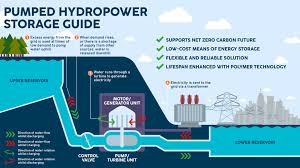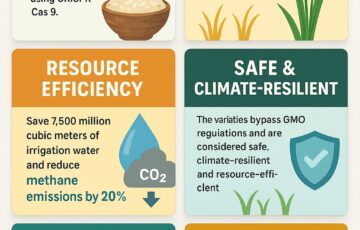The Sharavati Valley Pumped Storage Project Debate
Syllabus:
GS – 3- EIA, Large scale hydro power projects , development vs environment
Focus :
The article explores the Sharavati Valley Pumped Storage Project (PSP), highlighting the debate between meeting Karnataka’s rising power demands and preserving the Western Ghats’ biodiversity. It discusses the project’s impact on forests, wildlife, and climate while addressing the arguments of government officials, environmentalists, and energy experts. The analysis includes power demand trends, alternatives to large-scale hydro projects, and policy recommendations for sustainable energy development
Introduction
- Karnataka’s energy demand has been growing due to industrialization, urbanization, and increased electrification.
- The Sharavati Pumped Storage Project (PSP) is proposed to generate 2000 MW of additional power using existing reservoirs.
- The project site falls within the pristine forests of the Western Ghats, a UNESCO-recognized biodiversity hotspot, raising serious environmental concerns.
- The debate revolves around balancing energy security and environmental conservation.
Understanding the Sharavati Valley Pumped Storage Project
What is Pumped Storage Hydropower (PSP)?
- PSP is a renewable energy storage system that generates electricity by moving water between two reservoirs at different elevations.
- Water is pumped to an upper reservoir during low-demand periods (using surplus electricity) and released to a lower reservoir during peak demand to generate electricity.
- The Sharavati PSP proposes to connect existing Linganamakki, Gerusoppa, and Talakalale reservoirs through underground tunnels.
Project Specifications
- Installed Capacity: 2000 MW
- Project Site: Western Ghats, Karnataka
- Implementing Agency: Karnataka Power Corporation Limited (KPCL)
- Forest Area Impacted: 10,000+ trees to be felled
- Project Approval Status: Conditional clearance by the State Wildlife Board, awaiting central clearance.
Why is the Project Needed? The Energy Perspective
Karnataka’s Growing Power Demand
- Current peak demand: ~17,300 MW
- Projected peak demand (2031-32): T 25,505 MW
- Total electricity requirement in 2031-32: 1,20,775 million units
- Renewable energy sources like solar and wind are inconsistent due to weather dependency.
- Pumped Storage Projects can provide grid stability and backup power for fluctuating renewables.
Government’s Rationale for the Project
- Hydroelectricity is renewable, reliable, and cost-effective in the long run.
- Existing power sources, including thermal, wind, and solar, cannot always meet peak demand.
- PSP reduces reliance on coal-based power plants, aligning with India’s carbon neutrality goals.
- Affordable storage solution compared to battery storage options like Battery Energy Storage Systems (BESS).
Environmental Concerns: The Case Against the Project
Deforestation in a Biodiversity Hotspot
- The Western Ghats is one of the eight “hottest” biodiversity hotspots in the world.
- Total forest loss due to the project: 10,000+ trees, leading to fragmentation of wildlife habitat.
- Home to 730 lion-tailed macaques, wild dogs, leopards, pangolins, sloth bears, and rare bird species.
- The project threatens endangered flora in the Sharavathi Wildlife Sanctuary.
Impact on Climate
- Forests in the Western Ghats act as carbon sinks, absorbing large amounts of CO₂.
- Loss of tree cover will increase carbon emissions and accelerate climate change effects.
Hydrological and Soil Erosion Concerns
- Reservoir modifications may disrupt natural water flow, affecting nearby ecosystems.
- Increased soil erosion and sedimentation will degrade water quality in reservoirs.
Increased Human Activity and Infrastructure Expansion
- The project requires roads and tunnels, leading to encroachments and increased human activity in ecologically fragile zones.
- Illegal logging and poaching risks will rise due to improved road connectivity.
Socio-Economic Impact of the Project
Impact on Local Communities
- Indigenous communities and forest-dependent populations will lose their traditional livelihoods.
- Limited employment benefits, as the project is highly mechanized.
- Risk of land acquisition disputes and displacement of local farmers and tribal communities.
Tourism and Local Economy Disruptions
- Sharavati Valley is a major ecotourism hub in Karnataka, attracting thousands of visitors annually.
- Deforestation and dam construction will affect waterfalls, trekking trails, and wildlife sanctuaries, impacting tourism revenue.
Opposition from Environmentalists and Experts
Expert Concerns and Public Outcry
- Wildlife researchers, ecologists, and conservationists warn that cutting even a single tree in the Western Ghats has cascading effects.
- Lack of transparency: The Detailed Project Report (DPR) has not been shared with the public.
- Legal battles expected, as environmentalists plan to challenge the project in court.
Wildlife Board’s Conditional Clearance
- The State Wildlife Board approved the project with conditions, including reducing the number of trees cut.
- However, environmentalists argue that fragmentation and habitat destruction cannot be reversed.
Alternatives and Sustainable Solutions
1.Investment in Battery Energy Storage Systems (BESS)
- Battery storage technologies like Lithium-ion and Flow batteries can store surplus solar/wind power.
- BESS is scalable, modular, and does not require deforestation.
2.Enhancing Energy Efficiency and Demand Management
- Energy conservation policies can reduce peak power demand.
- Smart grids and decentralized renewable energy can improve energy security without ecological harm.
3.Exploring Offshore Wind Energy
- Karnataka has a long coastline, making offshore wind energy a viable option.
- Wind turbines at sea do not affect forests or wildlife.
4.Strengthening Solar Power Infrastructure
- Rooftop solar and floating solar projects on existing reservoirs can provide additional power.
- Solar parks can be expanded in barren and non-forest lands.
5.Small Hydro Projects Instead of Large Dams
- Small hydro projects cause less environmental damage compared to mega hydro projects.
- Community-driven hydro projects can empower local populations.
Conclusion: The Need for a Balanced Approach
- Development vs. Conservation: While Karnataka needs sustainable energy solutions, ecological damage must be minimized.
- The Sharavati PSP project raises serious environmental concerns, particularly for biodiversity and forest conservation.
- The government should explore less invasive alternatives like BESS, solar, offshore wind, and energy efficiency measures.
- A comprehensive Environmental Impact Assessment (EIA) should be conducted with public consultation and transparency.
- The future of Karnataka’s energy policy must prioritize long-term ecological sustainability over short-term energy gains.
Associated Article
https://universalinstitutions.com/fossil-fuel-up-2-44-non-fossil-up-10-8-in-fy24/
Mains UPSC Question GS 3
The Sharavati Valley Pumped Storage Project (PSP) is an attempt to meet Karnataka’s growing power demands, but it also raises concerns about environmental degradation in the Western Ghats. Critically analyze the need for the project and its potential environmental and socio-economic impacts. Suggest sustainable alternatives to balance development and conservation. (250 words).






